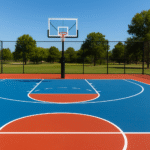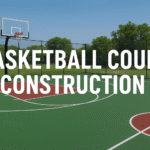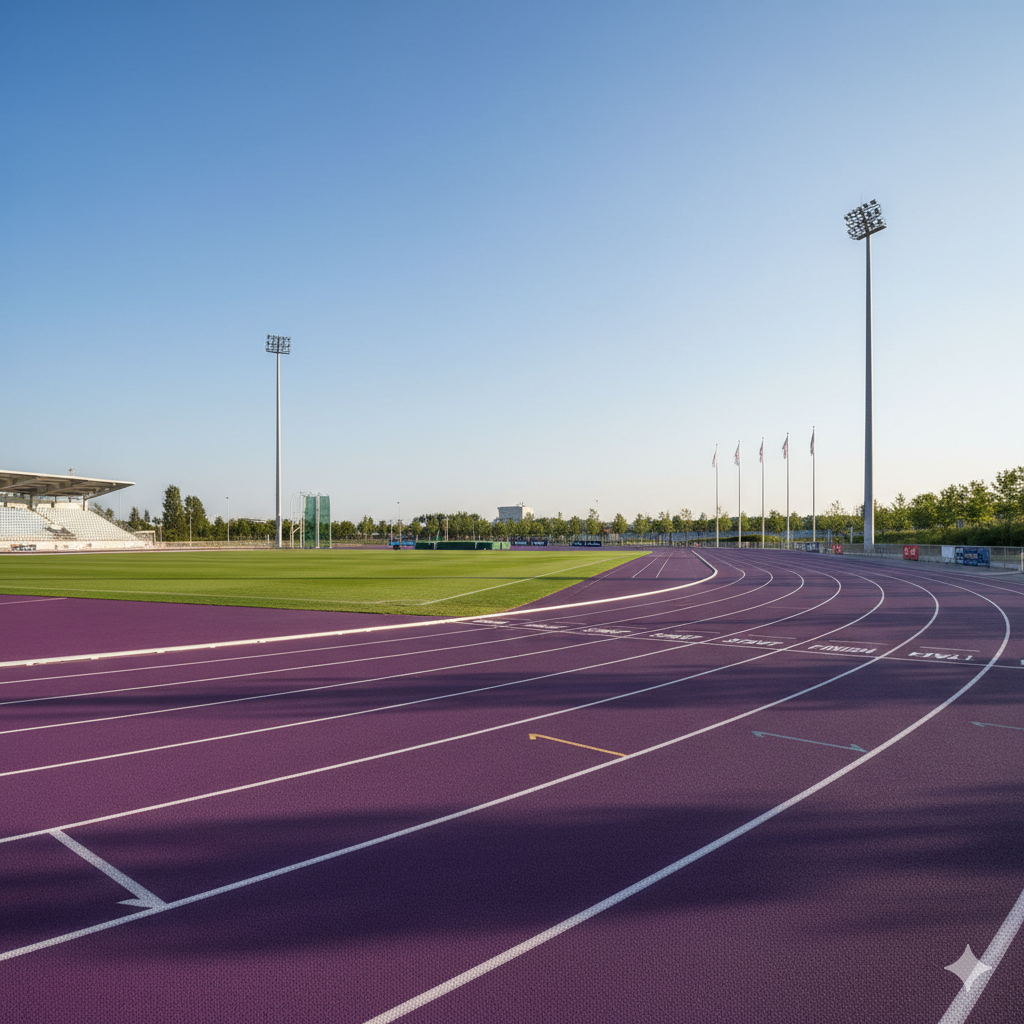Introduction
Have you ever wondered why Full Pur running tracks that look identical across the globe? That’s because every Olympic size running track follows strict international standards. These tracks are not just about aesthetics—they are meticulously designed for fairness, safety, and performance.
From schools and universities to professional sports complexes, building a properly sized running track is essential for training, competitions, and professional athletic development.
What is an Full Pur Size Running Track?
An Olympic size running track is a standard 400-meter track used in all official athletic competitions. Its size, shape, and layout are governed by World Athletics (formerly IAAF). These rules ensure athletes compete under identical conditions worldwide, whether in Tokyo, Paris, or New Delhi.
Dimensions of an Full Pur Running Track
-
Total Length: 400 meters (measured in Lane 1)
-
Number of Lanes: 8 lanes (9 lanes optional in some stadiums)
-
Lane Width: 1.22 meters each
-
Total Area: Approximately 176.91m x 92.5m for a full-sized track
This consistency ensures fair play, comparable performance, and accurate timing in competitions.
Track Layout and Markings
The layout of an Olympic track is a precise combination of straights and curves:
-
Straights: Two stretches of 84.39 meters
-
Curves: Two semicircular bends of 115.61 meters each
-
Starting Lines: Staggered to adjust for curve distances
Proper markings are crucial to prevent unfair advantages and ensure compliance with international standards.
Materials Used in Running Track Construction
Modern running tracks no longer use dirt or cinder surfaces. Popular flooring materials include:
-
Synthetic Polyurethane Flooring: Most common, durable, and weather-resistant.
-
Rubberized Surfaces: Offers shock absorption and safety for athletes.
-
Eco-Friendly Composites: Sustainable and high-performance options.
These materials enhance athlete performance, grip, and injury prevention.
Construction Process
Building a professional running track involves several precise steps:
-
Planning and Site Selection – Choose a flat, well-drained area with proper accessibility.
-
Base Preparation – Lay asphalt or concrete foundation to ensure stability.
-
Surface Installation – Apply polyurethane or sandwich systems with expert workmanship.
-
Line Marking and Finishing – Add lane numbers, curves, and event-specific markings.
Every step requires attention to detail, which is why professional court construction services are essential.
Running Track Flooring Options
Depending on your facility and budget, you can choose:
-
Polyurethane System: Durable, water-resistant, and ideal for long-term use.
-
Sandwich System: Multi-layered surface providing superior shock absorption.
-
Prefabricated Flooring: Ready-made sheets for quick, uniform installation.
Each type affects athlete performance and longevity of the track, making consultation with a certified running track manufacturer crucial.
Standards for Running Track Manufacturers
Only experienced and certified sports court manufacturers ensure compliance with World Athletics standards. Non-certified tracks may fail to meet international competition requirements.
Cost of Running Track Construction
Costs depend on surface type, number of lanes, site preparation, and location.
-
In India, constructing an Olympic size running track ranges between ₹3.5 – ₹7 crore.
-
Globally, costs range from $500,000 – $1 million.
Investing in quality materials and professional installation ensures long-term performance and safety.
Why Hire Professional Court Construction Services?
Professional services guarantee:
-
Accurate measurements and lane widths.
-
Compliance with full pur standards.
-
Durable, high-performance surfaces.
-
Safety for athletes during training and competition.
Cutting corners can lead to premature wear, injuries, and non-compliance with regulations.
Top Benefits of full pur Size Tracks
-
Provide world-class training facilities.
-
Allow hosting international-level competitions.
-
Increase the value of your sports facility.
-
Attract sponsorships and government recognition.
Difference Between Training Tracks and full pur running Tracks
-
Training Tracks: May have fewer lanes and shorter distances.
-
full Pur running tracks: Strictly 400 meters, 8 lanes, with standardized curves and markings for international events.
Maintenance of Running Tracks
Even the best tracks require regular maintenance:
-
Sweep and clean frequently.
-
Inspect for cracks or wear.
-
Resurface every 8–10 years.
Proper care extends the lifespan and ensures athlete safety.
Challenges in Construction
-
Weather Conditions: Rain or extreme heat can affect installation.
-
Budget Constraints: Quality flooring systems are expensive.
-
Material Availability: Imported materials may cause delays.
Future Trends in Running Track Flooring
-
Eco-friendly systems reducing environmental impact.
-
Advanced cushioning for injury prevention.
-
Smart surfaces with sensors for performance analytics.
Conclusion
An Olympic size running track is more than just a facility—it’s a platform where records are broken, dreams are achieved, and future champions are nurtured. Investing in professional track construction, high-quality materials, and certified manufacturers ensures safety, compliance, and longevity.
Whether building a school track, college stadium, or an international sports arena, the right track today shapes the champions of tomorrow.https://www.sports-facility.in/index.php
FAQs
1. What are the exact dimensions of an full Pur Running Track ?
400 meters long, 8 lanes, 1.22 meters per lane.
2. Which material is best for running track flooring?
Polyurethane or sandwich system for durability and performance.
3. How long does it take to construct an full Pur Running Track ?
Approximately 4–6 months, depending on site preparation.
4. What is the average cost?
₹3.5 – ₹7 crore in India; $500,000 – $1 million globally.
5. Why is lane width important?
Ensures fairness, accurate timing, and compliance with international standards.




